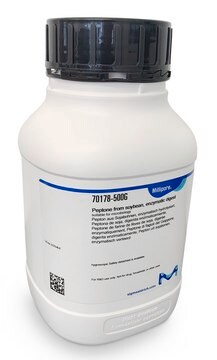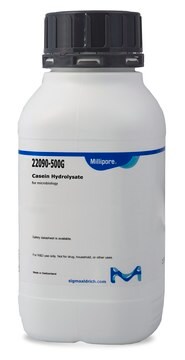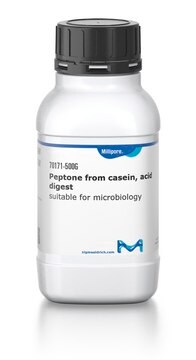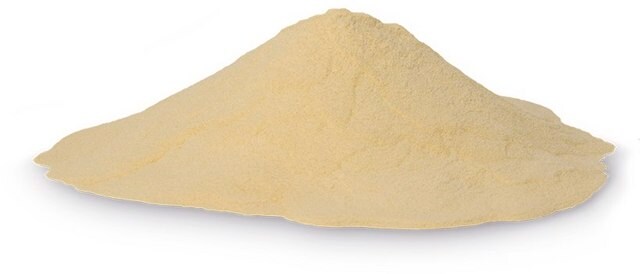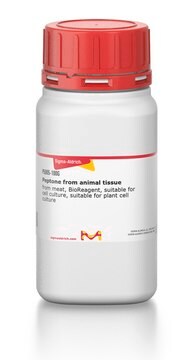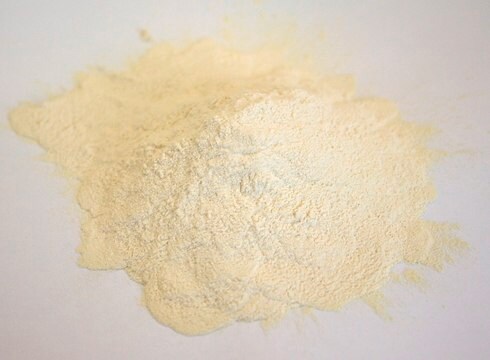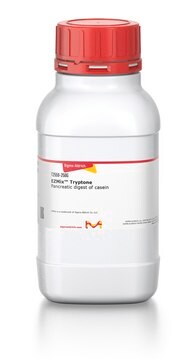82303
Casein Peptone
Enzymatic digest of casein from bovine milk, ~0.3 AN:TN ratio, suitable for biotechnology and microbiology
Sinonimo/i:
Peptone from casein, Peptone from casein, enzymatic digest
About This Item
Prodotti consigliati
product name
Peptone, Enzymatic digest of casein, for biotechnological purposes
Origine biologica
bovine milk
Livello qualitativo
Grado
for biotechnological purposes
Forma fisica
powder
Composizione
total nitrogen (N), ~13%
Tenore di azoto
, ~0.3 AN:TN ratio
Residuo alla calcinazione
<17%
Perdita
<6% loss on drying
pH
7.0±0.5 (2% in H2O)
Solubilità
H2O: 2%, clear, yellow to tan
water: soluble 2%, clear, faintly brown-yellow
applicazioni
food and beverages
microbiology
Cerchi prodotti simili? Visita Guida al confronto tra prodotti
Descrizione generale
Applicazioni
Bacterial cultures for short term storage of bacteria.
The basal Glucose Yeast Peptone (GYP) medium.
As nitrogen supplement in the culture medium of Ceriporiopsis subvermispora.
Culture medium of Methylobacterium rhodesianum and Ralstonia eutropha.
Codice della classe di stoccaggio
11 - Combustible Solids
Classe di pericolosità dell'acqua (WGK)
WGK 1
Punto d’infiammabilità (°F)
Not applicable
Punto d’infiammabilità (°C)
Not applicable
Dispositivi di protezione individuale
Eyeshields, Gloves, type N95 (US)
Scegli una delle versioni più recenti:
Possiedi già questo prodotto?
I documenti relativi ai prodotti acquistati recentemente sono disponibili nell’Archivio dei documenti.
I clienti hanno visto anche
Il team dei nostri ricercatori vanta grande esperienza in tutte le aree della ricerca quali Life Science, scienza dei materiali, sintesi chimica, cromatografia, discipline analitiche, ecc..
Contatta l'Assistenza Tecnica.


